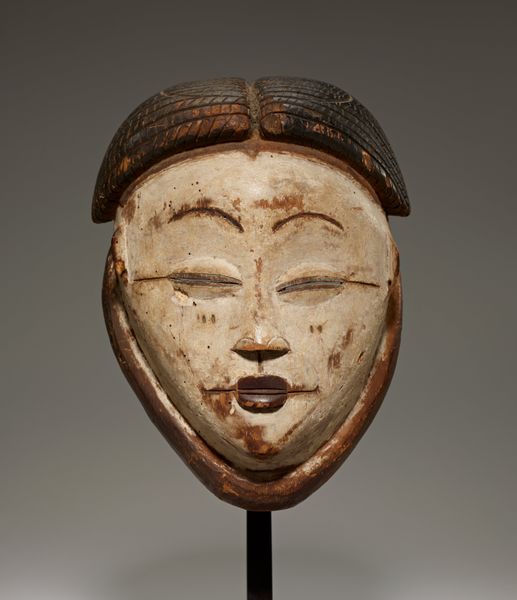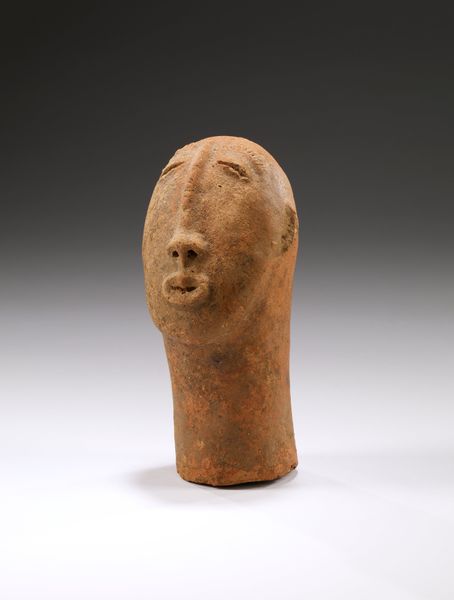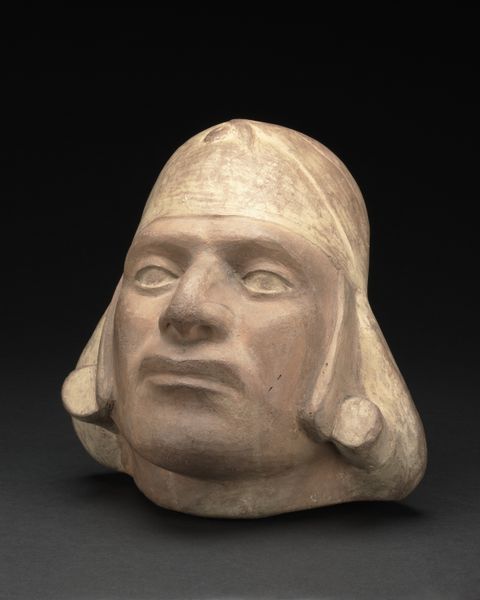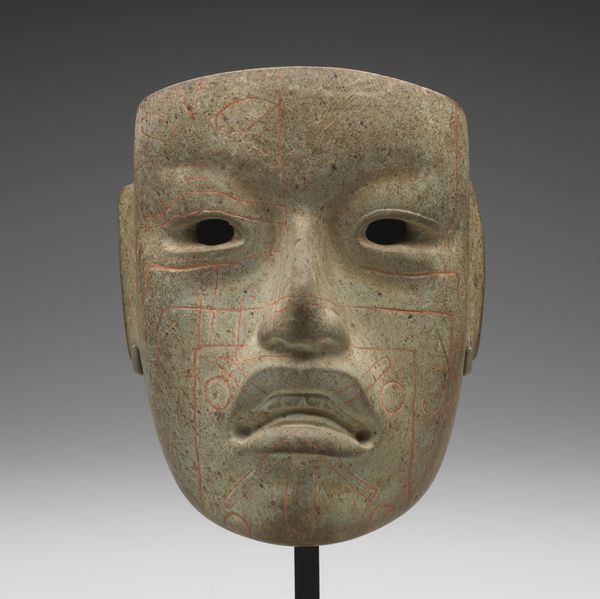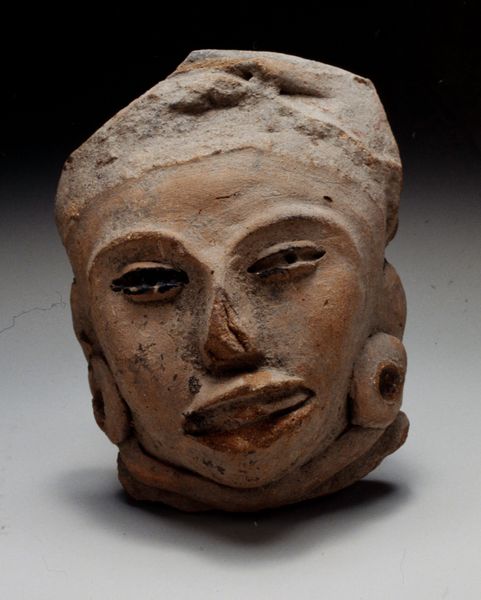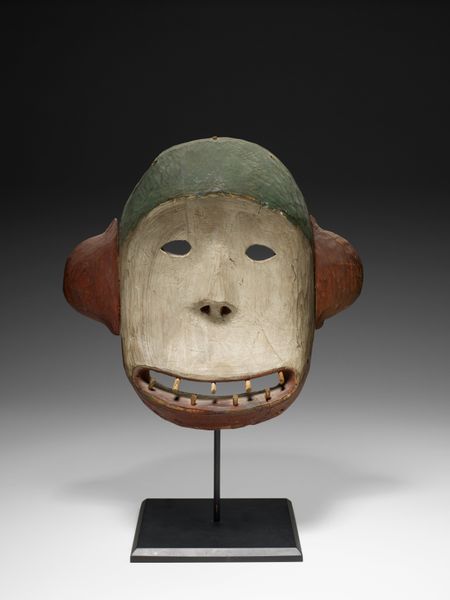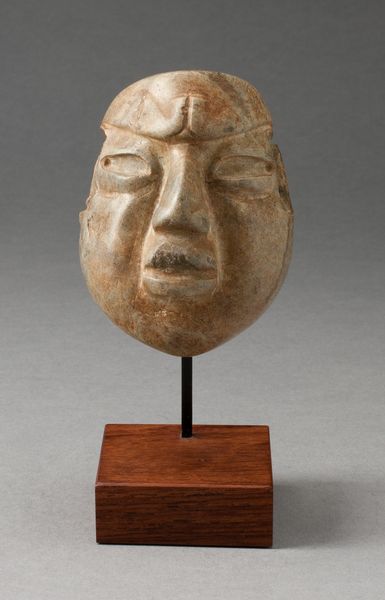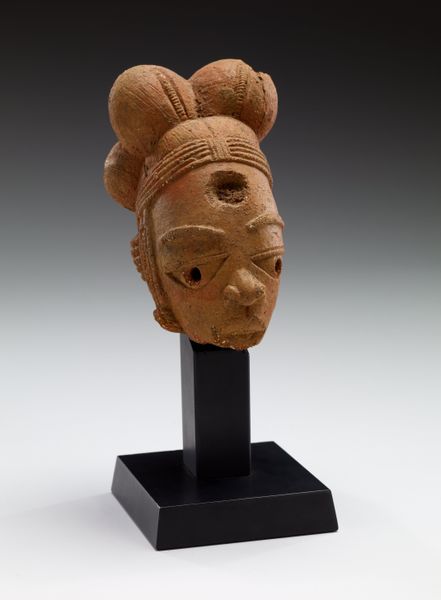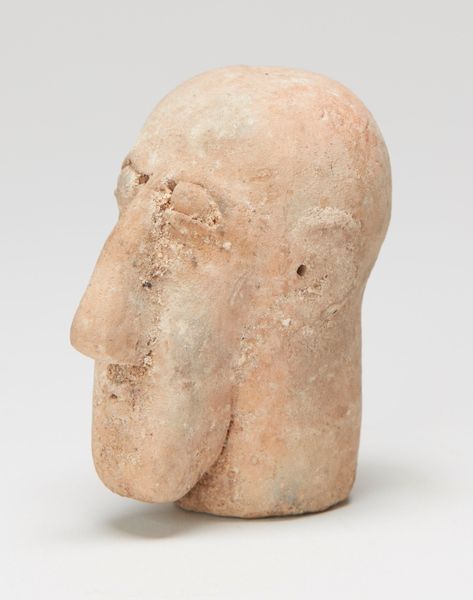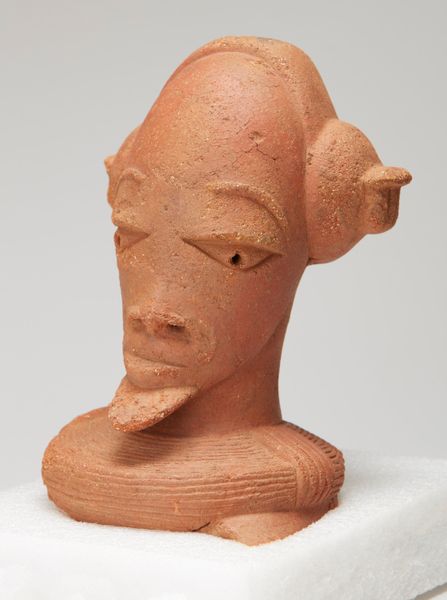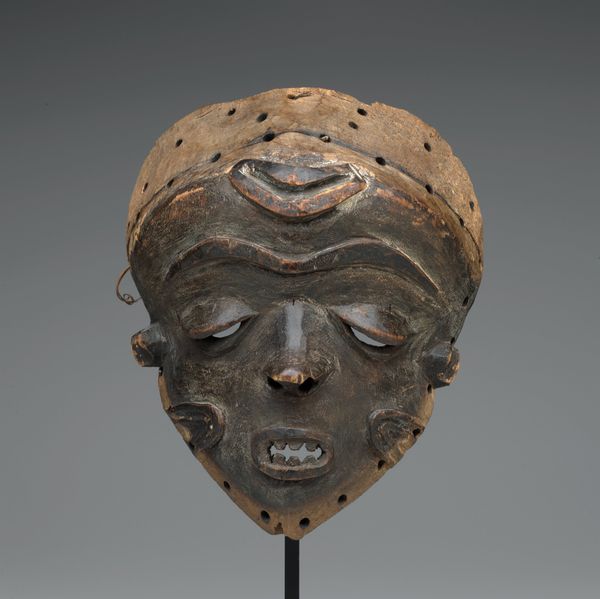
carving, sculpture, wood
#
portrait
#
carving
#
figuration
#
sculpture
#
wood
#
yoruba-art
Dimensions: 9 3/8 x 7 1/8 x 4 3/8 in. (23.8 x 18.1 x 11.1 cm)
Copyright: Public Domain
Editor: We’re looking at a “Mask” from the Yombe people, likely from the late 19th century. It's a wood carving and it’s currently held at the Minneapolis Institute of Art. The smoothness of the wood is quite striking, it's simple but compelling. How do you read this piece, in terms of materials and social context? Curator: Considering its creation through carving, let's examine how the removal of material shaped the form. It is not just about the aesthetics; consider the labor involved in selecting, cutting, and shaping the wood. What does the choice of wood itself tell us about local resources and trade networks? And how might its patina speak to the environment it existed in, reflecting exposure to particular climates and use? Editor: That's fascinating, I hadn’t considered how the wood's source would point to larger networks. How would it have been used? Curator: As a mask, this object had a social function within Yombe society. The process of adorning, performing, and enacting roles brings it into active social play. It's about examining its place within ritual, how it facilitated specific interactions, and possibly even the exchange of value within a community. It is important to look beyond just what is visually apparent, and dive deeper into its operational capacity. How could we start to study the specific usage of such masks in relation to social control? Editor: It makes me consider the mask as an object that goes beyond art; more like a tool. I realize there's much more to it than just visual appeal. Curator: Exactly! It’s about appreciating the object's history of production and understanding its position in societal relationships, and its materiality. Editor: Thank you. I am definitely viewing it from a totally different angle now. It definitely enhances its appeal.
